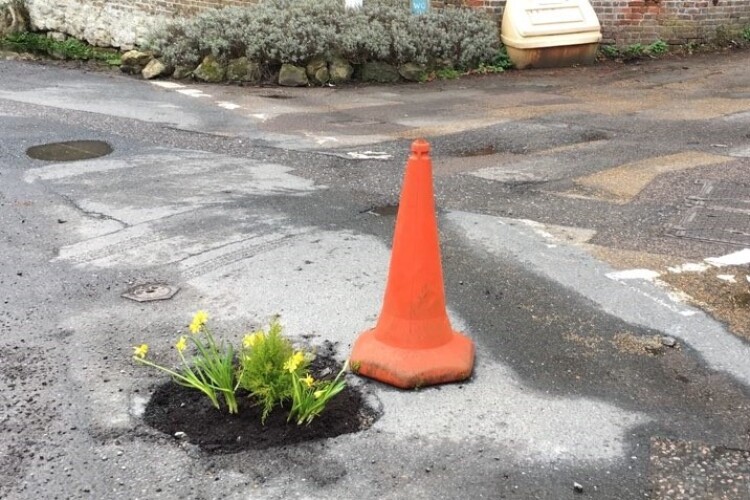The 2024 Annual Local Authority Road Maintenance survey report – ALARM – highlights the scale of the challenge that faces local authority highway teams who don’t have the funds to keep our roads in good shape.
Local authorities in England and Wales effectively experienced a real-terms cut due to the impact of rising costs due to inflation, despite average highway maintenance budgets increasing by 2.3% to £26.4m per authority. In addition, 45% of authorities reported a cut or freeze in their highway maintenance budget, even before inflation is taken into account.
The additional amount local authorities across England and Wales would have needed to maintain their network to their own targets was £1.22bn. This means that the average shortfall in the 2023/24 carriageway budget was £7.2m per authority.
The one-time catch-up cost has increased by 16% to a new record high of £16.3bn and the work to address it would still take a decade to complete. This is the amount needed, as a one-off (at today’s prices), to bring the network up to a condition that would allow it to be managed cost-effectively as part of a proactive asset management approach.
“Local authorities have a bit more money to spend this year but the impact of rising costs due to inflation means they have actually been able to do less with it,” said Rick Green, chair of the Asphalt Industry Alliance, which commissions the ALARM survey.
“Couple this with the effects of the extreme weather we are increasingly facing, and the result is that the rate at which local roads are suffering is accelerating towards breaking point.”
The survey found that more than 107,000 miles of local authority roads could need to be rebuilt within the next 15 years while surface conditions have also declined, despite spending nearly £140m filling in two million potholes over the last 12 months.
Rick Green added: “There’s still a mountain to climb when it comes to fixing our local roads and while it’s great that English local authorities should be getting more money from the government through its Network North funding, it’s clearly not going to be enough to halt the decline.
“The transport secretary was quoted as saying that the additional £8.3bn over 11 years is enough to resurface 5,000 miles of local roads. This sounds like a lot, but not when you consider that there are already more than 34,000 miles identified as structurally poor, with less than five years’ life remaining.
“We need to get to the point where local authority highway engineers can plan and proactively carry out repairs and preventative works in the most timely and efficient way to the greatest benefit of all road users – rather than just having enough money to address immediate and urgent needs.”
AA president Edmund King said: “Our breakdown data shows that 2023 was the worst year for potholes for five years. The latest ALARM report shows just how much is needed to simply get our roads up to standard.
“Arguably the road network is a local council’s biggest asset, but not enough planned investment and repairs are being made to make streets safer and smoother for drivers and those on two wheels. Resurfacing occurs on average once every 80 years – making it a once in a lifetime event.”
Each year the Asphalt Industry Alliance commissions an independent survey

of local authority highway departments in England (including London) and Wales.
The aim of the survey is to take a snapshot of the general condition of the
local road network, based on information provided directly by those responsible
for its maintenance. The data received from local authorities provides a means
of tracking any improvement or deterioration, allowing long-term trends to be
reported, and the qualitative feedback received from them provides context.
Questions in the survey relate predominantly to the maintenance of the
carriageway itself – the road surface and structure – and only that part of the
total highway maintenance budget which specifically addresses the condition
of the carriageway, referred to as the carriageway maintenance budget.
This year’s ALARM survey is the 29th and received responses from 72% of local highway authorities in England and Wales.
The survey report is available at www.asphaltuk.org
Got a story? Email news@theconstructionindex.co.uk



